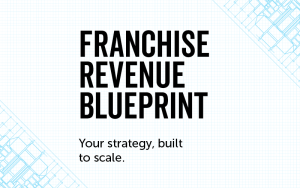Highlights:
- Tracking marketing performance across multiple franchise or regional locations requires KPIs that account for geographic, demographic, and operational differences.
- Core metrics include Cost per Lead (CPL), Conversion Rate by Channel, Store Visit Attribution, Marketing-Attributed Revenue, and campaign-level ROAS/ROI.
- Benchmarking must be location-aware. For example, success varies in rural areas when compared to urban centers. Use performance ranges and segment stores by geography, maturity, and traffic.
- Standardize tracking with unified naming conventions, dashboard filters by region or store, and franchisee-friendly metrics like calls, leads, and walk-ins.
- Tools like HubSpot, Google Looker Studio, Domo, and Tableau help manage real-time insights, allowing corporate and local teams to align with clarity.
- Integrated systems (CRM, POS, ad platforms) enable smarter, centralized reporting, thus reducing confusion and improving strategic action.
- Solid KPI tracking powers forecasting tools, Customer Lifetime Value modeling, and scorecard reporting, laying the foundation for scalable growth.
Measuring franchise and multi-location marketing success is tough enough when you’ve got one brand to wrangle. Now multiply that by 25, 50, or 300 locations—each with different markets, managers, and budgets, along with a few rogue store Facebook pages that somehow still exist!
The KPI and Benchmarking Hit List for Multi-Location Marketers
Welcome to franchise and multi-location marketing, where every campaign is omnichannel, every report is a Rubik’s Cube, and every franchisee wants proof that your email blast actually drove foot traffic.
In this article, we’re diving into the key metrics that matter most when you’re marketing across multiple locations. We’ll talk about which multi-location and franchise marketing KPIs to track, how to benchmark marketing performance fairly (no, rural Montana and downtown Minneapolis are not twins), and how to build reporting systems that both corporate and franchisees can trust.
Let’s clean up your data and make you look like the marketing genius you are.
Why Most Multi-Location KPI Reports Miss the Mark
If your marketing report includes a single column labeled “Conversions” for 147 locations, it might be time for a refresh.
Here’s why most reporting frameworks crumble under the pressure of multi-location marketing:
- What’s great for one store is bad for another. A location in a busy urban center might see a $10 CPL and throw a party. A suburban location with lower rent and longer sales cycles might need a number closer to $5.
- Lack of standardization creates chaos. One store tracks leads through the CRM. Another uses a Google Sheet. A third just “has a feeling it’s working.” The result? Confused marketers, misaligned strategy, and data you can’t defend in a meeting.
Let’s fix that, shall we?
The Must-Track Metrics Across Every Location
These KPIs are the bedrock of franchise marketing success. Track them consistently, and you’ll have a performance picture you can trust—even across dozens (or hundreds) of locations.
Related: 9 Digital Marketing KPIs That Prove ROI
1. Cost per Lead (CPL)
Your best friend in budget conversations. Segment this by channel and location to see what’s working and what’s causing your dollars to vanish into the marketing void.
2. Conversion Rate by Channel
It’s not enough to generate leads—what happens to them? This tells you which marketing channels are doing the heavy lifting. Bonus points if you can tie this to specific creative variations or promos.
3. Store Visit Attribution
If you’re running digital ads or emails meant to drive in-store visits, track them. Use tools like Google’s Store Visit conversions or QR codes to close the online-to-offline loop.
4. Marketing-Attributed Revenue
The gold standard. Tie purchases (online or offline) back to specific campaigns. CRM and POS integration is your secret weapon here.
5. ROAS and ROI by Campaign
Return on Ad Spend (ROAS) and Return on Investment (ROI) are essential, but they only tell the full story when split by location. The same campaign can be a rock star in one region and a total flop in another. Drill down.
Related: 8 Ways to Measure Print Marketing ROI
Benchmarking in a Multi-Location Marketing Context
Spoiler alert: Flat benchmarks for key metrics don’t work. You can’t set the same target CPL or ROAS for a highway-side franchise in Iowa and a flagship location in downtown LA.
Here’s how to benchmark smarter:
- Segment by geography, store maturity, and traffic patterns: A brand-new store shouldn’t be held to the same standard as a five-year veteran with an established customer base.
- Group stores into performance cohorts: High-traffic, medium-traffic, and low-traffic stores should each have their own performance “swim lane.”
- Use performance ranges instead of hard numbers: For example, target CPLs of $8–$12 instead of a fixed $10.
This way, you don’t just measure success, you measure success fairly. That’s how you build trust with franchisees and execs.
Smart Ways to Standardize KPI Tracking
Ready to tame the reporting beast? Use these tactics to streamline your key metrics across locations:
- Dashboards With Filters. Tools like HubSpot, Google Looker Studio, Agency Analytics, Domo, or Tableau can give you real-time visibility, with filters by store, region, or campaign. Let users slice the data how they need it.
- Make It Franchisee-Friendly. Track what franchisees care about: leads, calls, visits, and dollars. Don’t bombard them with impressions and CPMs if they just want to know how many people walked in the door.
- Integrate Your Systems. If your CRM, POS, and ad platforms aren’t talking to each other, you’re missing the full picture. Integration makes your data smarter (and your life easier).
- Use Consistent Naming Conventions. If every campaign is tagged differently by region or team, your reports will look like alphabet soup. Standardization is your bestie.
Related: Standardizing Data for Multi-Location Marketers
Want to Forecast the Future? Start Here.
Once you’ve nailed down segmented KPI data across all locations, you’re ready for the big leagues: CLV modeling, predictive analysis, and marketing mix optimization.
Accurate KPIs feed into:
- Customer Lifetime Value (CLV) models: Know how much a lead is really worth in each location.
- Dashboards and Scorecards: Show at-a-glance performance by franchise, region, or campaign.
- Data-Driven Forecasting: Predict which stores need more marketing dollars (and which are coasting just fine).
In short, if you want to grow smarter, start with the right foundation. At the intersection of key metrics, consistent benchmarking, and scalable dashboards lies true marketing magic.
And guess what? We’re here for it. We’re the data-driven benchmark marketing machine that helps turn your multi-touch campaign into a multi-faceted ROI generator—no matter how many ZIP codes you’re managing.
Success looks different everywhere, but smart benchmark marketing tracking brings it all into focus. With the right KPIs, benchmarks, and tools, you can prove the value of your marketing from the corporate boardroom to the corner franchisee.
Let’s get measuring.



